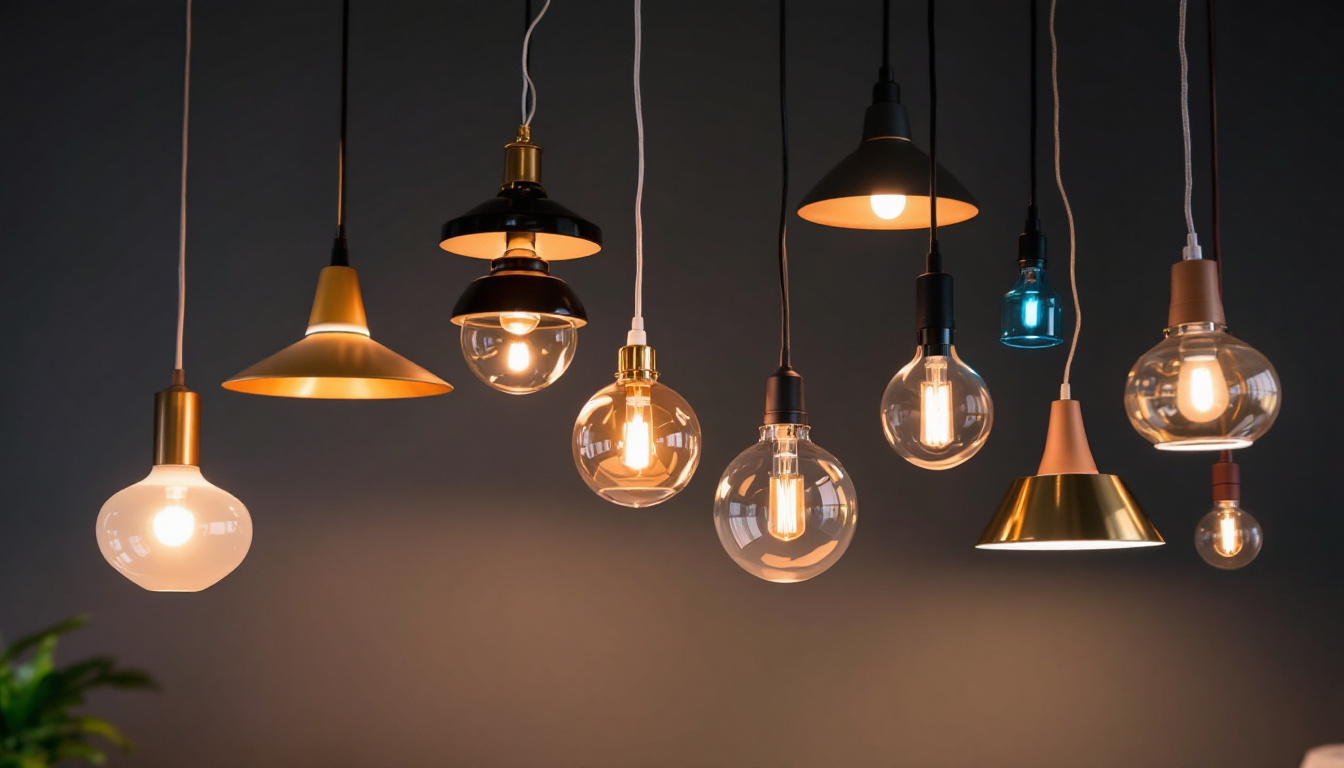
In the realm of commercial lighting, safety is paramount. Whether illuminating a warehouse, office space, or retail environment, the choice of lighting technology can significantly impact both safety and efficiency. Among the various options available, commercial electric LED lights have emerged as a leading choice for contractors and businesses alike. This article delves into how LED lighting enhances safety in various installations, providing insights that are crucial for lighting contractors.
Safety in lighting installations is not just a regulatory requirement; it is a fundamental aspect of creating a secure environment. Poorly lit areas can lead to accidents, injuries, and even criminal activities. Therefore, understanding the role of lighting in safety is essential for contractors who aim to deliver quality installations.
Moreover, safety extends beyond just visibility. It encompasses energy efficiency, longevity, and the ability to adapt to various environments. Each of these factors plays a critical role in how lighting installations are perceived and utilized in commercial settings. For instance, in outdoor spaces, proper lighting can deter potential criminal activities, making it vital for businesses to invest in high-quality lighting solutions that enhance safety and security.
One of the primary functions of lighting is to provide visibility. Commercial electric LED lights offer superior brightness and clarity compared to traditional lighting solutions. This enhanced visibility is crucial in environments such as warehouses and retail spaces, where employees and customers need to navigate safely.
LED lights produce a high lumen output, ensuring that even the darkest corners are well-lit. This not only reduces the risk of accidents but also enhances the overall aesthetic of the space, making it more inviting and secure. Additionally, strategically placed lighting can highlight pathways, signage, and emergency exits, further promoting safety. In areas prone to high traffic, such as shopping malls or airports, the right lighting can significantly improve the flow of movement, minimizing congestion and potential hazards.
In addition to providing safety through visibility, LED lights are known for their energy efficiency. They consume significantly less power than traditional incandescent or fluorescent lights, which translates to lower energy bills for businesses. This efficiency is not only cost-effective but also contributes to a more sustainable environment.
By using LED technology, contractors can help businesses reduce their carbon footprint while maintaining a safe and well-lit environment. This dual benefit of safety and sustainability is increasingly becoming a priority for many organizations. Furthermore, the longevity of LED lights means less frequent replacements, which reduces waste and the environmental impact associated with manufacturing and disposing of lighting fixtures. As businesses become more conscious of their environmental responsibilities, the integration of energy-efficient lighting solutions will likely play a pivotal role in their overall sustainability strategies.
Commercial electric LED lights come equipped with various features that further enhance safety in lighting installations. Understanding these features can help contractors make informed decisions when selecting lighting solutions for their projects.
One of the standout features of LED lights is their ability to turn on instantly. Unlike traditional lighting, which may take time to warm up, LED lights provide immediate illumination. This is particularly important in emergency situations where quick visibility is essential. For instance, in a commercial kitchen or a warehouse, the ability to have instant light can prevent accidents and ensure that workers can quickly assess their surroundings in case of an emergency.
Additionally, many LED systems offer dimming capabilities, allowing for adjustable brightness levels. This flexibility can be advantageous in settings such as conference rooms or retail spaces, where lighting needs may vary throughout the day. By providing the right amount of light, contractors can help create a safer environment for both employees and customers. Moreover, the ability to dim lights can also contribute to energy savings, as lower light levels can be used during off-peak hours, further promoting a sustainable approach to safety and efficiency.
LED lights are known for their durability, which is a significant safety feature. Unlike traditional bulbs that are fragile and prone to breakage, LEDs are constructed with robust materials that can withstand harsh conditions. This makes them ideal for commercial settings where lighting fixtures may be exposed to impacts or vibrations. For example, in industrial environments, LED lights can endure the rigors of machinery operation without compromising their performance, ensuring consistent safety standards are maintained.
Furthermore, the longevity of LED lights means less frequent replacements. This not only reduces maintenance costs but also minimizes the risk associated with changing bulbs, particularly in high ceilings or hard-to-reach areas. A longer lifespan contributes to a safer environment by reducing the chances of accidents during maintenance activities. Additionally, many LED lighting solutions are designed to operate efficiently in extreme temperatures, making them suitable for outdoor applications or unconditioned spaces, where traditional lighting might fail. This resilience ensures that safety is never compromised, regardless of the environment.
For lighting contractors, understanding and adhering to safety standards is crucial. Commercial electric LED lights often meet or exceed various safety regulations, making them a reliable choice for installations.
Compliance with standards such as the National Electrical Code (NEC) and Underwriters Laboratories (UL) ensures that the lighting systems are safe for use in commercial applications. By choosing LED lighting that meets these standards, contractors can provide peace of mind to their clients, knowing that they are investing in a safe and compliant solution.
One of the safety advantages of LED lighting is its low heat emission. Traditional lighting sources, such as incandescent bulbs, generate significant heat, which can pose a fire hazard, especially in enclosed spaces. In contrast, LED lights emit very little heat, making them a safer option for commercial installations.
This reduced heat output also contributes to the overall comfort of the environment. In spaces where employees work for extended periods, such as warehouses or manufacturing facilities, lower heat levels can enhance productivity and well-being.
The advent of smart lighting technology has revolutionized the way lighting is controlled in commercial environments. Many LED systems now come equipped with smart features that enhance safety through automation and remote control.
For instance, motion sensors can automatically turn lights on when someone enters a room, ensuring that areas are always well-lit when needed. Additionally, smart lighting can be integrated with security systems, providing an added layer of safety through synchronized lighting responses during security breaches or emergencies.
While the benefits of commercial electric LED lights are clear, proper installation is crucial to maximizing their safety features. Contractors must pay attention to several factors during the installation process to ensure optimal performance and safety.
The placement and spacing of lighting fixtures play a vital role in ensuring adequate illumination. Contractors should carefully assess the layout of the space and determine the best locations for LED lights to eliminate dark spots and ensure even lighting distribution.
In high-traffic areas, such as hallways and entrances, additional lighting may be necessary to enhance visibility and safety. By strategically positioning lights, contractors can create a safer environment that reduces the risk of accidents.
Electrical safety is a critical aspect of any lighting installation. Contractors must ensure that all wiring is done according to local codes and standards. Using high-quality materials and following best practices can prevent electrical hazards that may compromise safety.
Additionally, it is essential to consider the load capacity of circuits when installing LED lights. Overloading circuits can lead to failures and potential safety risks. A thorough understanding of electrical systems is necessary to ensure a safe and compliant installation.
Even after installation, the safety of LED lighting systems must be maintained to ensure their continued effectiveness. Regular maintenance checks can help identify potential issues before they become significant problems.
Contractors should recommend routine inspections of lighting fixtures to check for any signs of wear or damage. This includes examining the integrity of the fixtures, ensuring that all connections are secure, and verifying that the lights are functioning correctly.
By conducting regular inspections, contractors can address any safety concerns promptly, ensuring that the lighting system remains reliable and effective in enhancing safety.
Dust and debris can accumulate on lighting fixtures, reducing their effectiveness and safety. Regular cleaning is essential to maintain optimal performance. Contractors should advise clients on the best cleaning practices to ensure that LED lights remain bright and clear.
Additionally, any burnt-out bulbs should be replaced immediately to maintain consistent lighting levels. A proactive approach to maintenance can significantly enhance the safety of commercial lighting installations.
Commercial electric LED lights offer numerous advantages that enhance safety in lighting installations. From improved visibility and energy efficiency to compliance with safety standards and smart technology integration, LEDs are transforming the landscape of commercial lighting.
For lighting contractors, understanding the features and benefits of LED lighting is essential for delivering safe and effective installations. By prioritizing safety in every aspect of the installation process—from planning and placement to maintenance—contractors can provide their clients with a secure and well-lit environment that meets the demands of modern commercial spaces.
As the industry continues to evolve, staying informed about the latest advancements in LED technology will empower contractors to make the best choices for their projects, ultimately enhancing safety and satisfaction for all stakeholders involved.
Ready to elevate the safety and efficiency of your lighting installations with the cutting-edge advantages of commercial electric LED lights? Look no further than LumenWholesale, where we provide contractors with top-quality, spec-grade lighting products at unbeatable wholesale prices. Our extensive selection is designed to meet the highest industry standards, ensuring you get reliable, high-performance lighting for every project. Plus, with free shipping on bulk orders, you can secure premium lighting solutions at the best value — without hidden fees or compromises. Don’t miss out on the perfect blend of quality, affordability, and convenience. Discover the LumenWholesale difference and make your next project shine by visiting Wholesale Lighting at the Best Value.

Discover how T5 LED technology is revolutionizing the lighting industry by offering contractors a cost-effective and time-saving solution.

Explore the transformative impact of solar panel lights on outdoor projects for lighting contractors.

Discover the essential steps and reasons why replacing fluorescent light fixtures is crucial for lighting contractors.

Discover innovative strategies to future-proof your lighting projects with hanging lighting pendants.